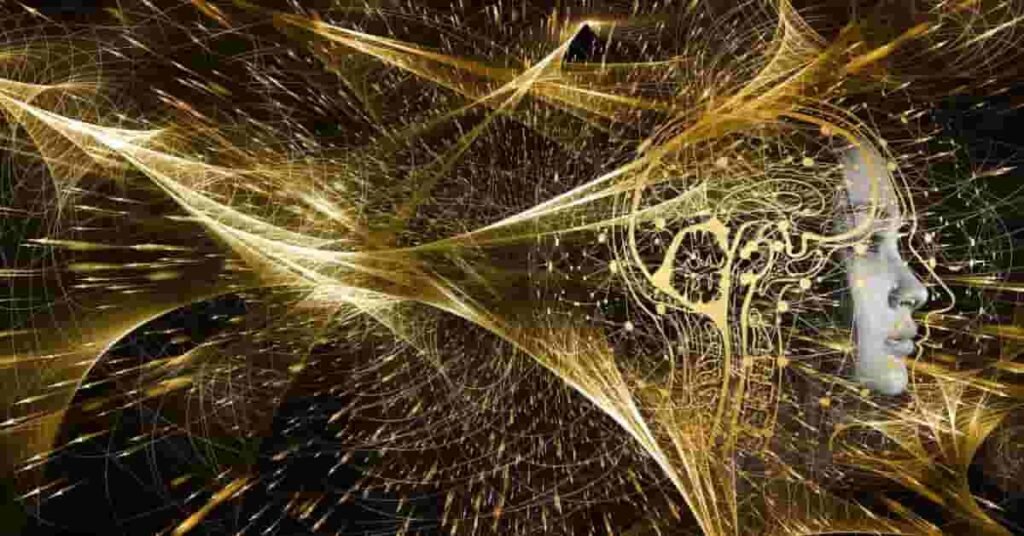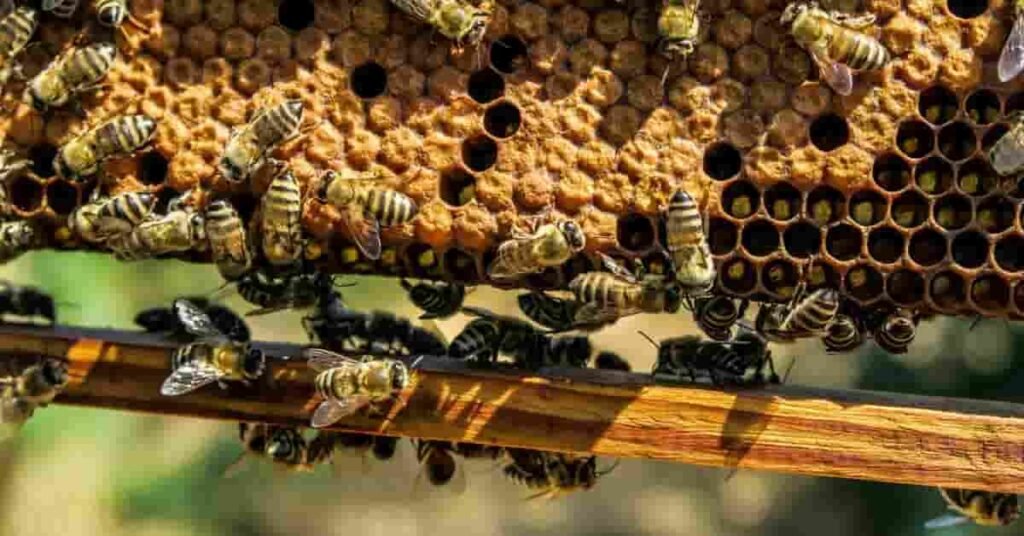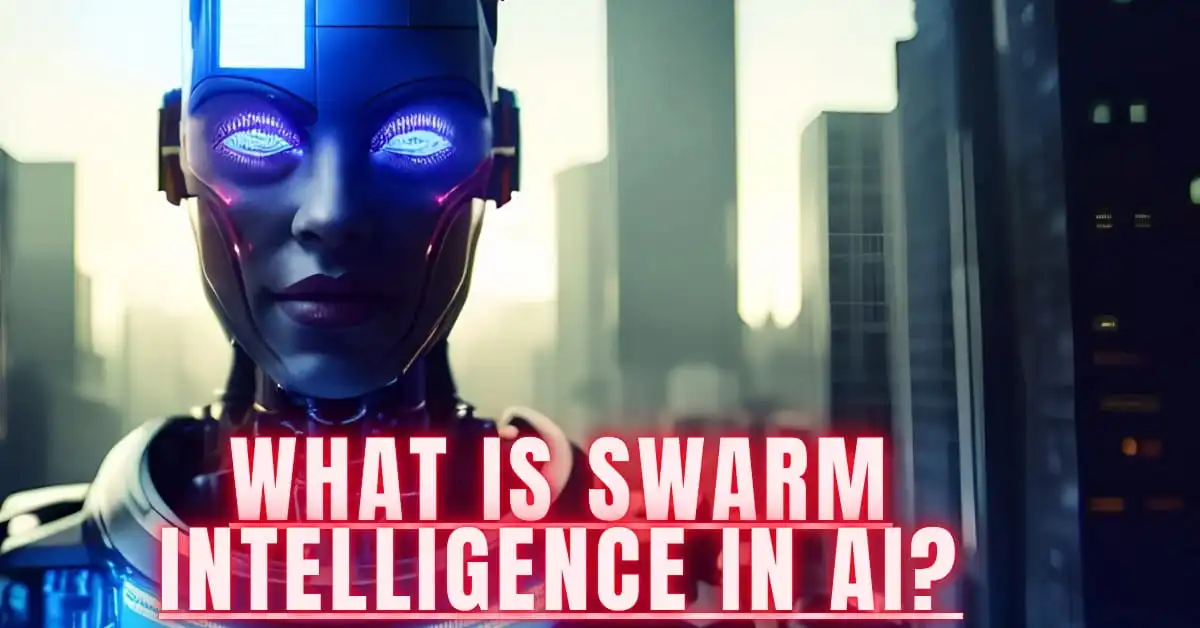Have you ever watched a swarm of bees dance in perfect unison, seemingly guided by an invisible hand?
Imagine if we could harness that collaborative intelligence, not just for honey product, but to break some of our most burning problems.
That’s the core idea behind swarm intelligence (SI), a fascinating field in Artificial Intelligence (AI) inspired by the collaborative power of nature’s swarms.
Swarm intelligence in AI solves problems frequently supposed toointricate for traditional AI. By mimicking the decentralized decision-making of natural swarms, we can unlock a new level of problem-solving potential.
Note: This article includes AI-generated sections for accuracy, all reviewed and edited by human experts.
Key-points
How does swarm intelligence work?
Ever wondered how bees find the best flower patches or ants build elaborate tunnels? Unlike traditional AI with its complex algorithms, Swarm Intelligence in AI takes a more popular approach. Here’s the secret sauce:
- Simple Agents: Picture a swarm of bees. Each freak, acting as an agent, follows introductory rules like “ follow the scent of flowers ” or “ dance to communicate position. ”
- Local Interactions: These individual bees interact with their neighbors, sharing information and adapting their behavior based on what they find.
- Emergent Intelligence: The beauty lies in how these seemingly insignificant interactions between simple agents lead to remarkable group outcomes.
Think about it this way: a single ant has limited intelligence. But a colony, working together, can inclusively navigate vast distances, make complex structures, and indeed optimize rustling strategies.
Real-world example
Business traffic is a major headache in utmost metropolises. Traditional AI approaches might struggle to find the optimal result. still, mass-grounded algorithms can dissect real-time business data, pretend different scripts, and suggest dynamic adaptations to business lights or signal timings. This can help reduce traffic and ameliorate business inflow for everyone.
Remember: Swarm Intelligence in AI is a rapidly evolving field with immense potential. Experimenters are exploring its operations in colorful areas, including:
- Robot swarms for search and rescue operations.
- Optimizing logistics and supply chains.
- Financial market analysis and prediction.
By understanding how swarm intelligence in AI works, we can unlock new possibilities for solving some of our most pressing challenges.
This is a field brimming with potential, and the future holds exciting possibilities for leveraging the collective power of simple minds to achieve extraordinary things.
Want to dig deeper check out these coffers.
1. Swarm intelligence
2. Distributed Swarm Intelligence
Swarm Intelligence vs. Traditional AI
| Feature | Traditional AI | Swarm Intelligence (SI) |
|---|---|---|
| Approach | Centralized control, complex algorithms | Decentralized, simple rules |
| Communication | Limited | Local interactions |
| Problem-solving | Often struggles with complex, dynamic situations | Well-suited for adapting to changing environments |
Who invented swarm intelligence?
Formalizing the Concept: In 1989, Gerardo Beni and Jing Wang were the first to use the term “swarm intelligence” in a research paper, laying the foundation for further exploration.
Building on the Foundation: While Beni and Wang deserve credit for coining the term and initiating research, the field has seen significant contributions from researchers like Craig Reynolds and Marco Dorigo who developed specific SI algorithms.
swarm intelligence algorithms
Here are some popular swarm intelligence algorithms inspired by nature’s collective problem-solving:
Ant Colony Optimization (ACO):
Inspired by foraging ants, this algorithm helps find optimal paths through complex networks. Imagine using ACO to optimize delivery routes in a megacity, minimizing trip time and distance.
Particle Swarm Optimization (PSO):
Mimicking the flocking behavior of birds, PSO helps find optimal solutions in search spaces. Think of using PSO to design efficient solar panels by optimizing the placement of solar cells for maximum energy capture.
Curious to delve deeper into specific SI algorithms? Explore resources like,
Swarm Intelligence applications
Swarm intelligence isn’t just a theoretical concept. Here are some exciting real-world applications:
- Traffic management: Optimizing traffic light timings and signal coordination to reduce congestion.
- Robotics: Controlling swarms of robots for search and rescue operations in disaster zones.
- Financial market analysis: Identifying trading opportunities and making informed investment decisions.
Advantages of Swarm Intelligence in AI

- Robustness: Robustness and essential redundancy within the system ensure continued functionality indeed if individual agents malfunction. This mimics the resilience observed in biological swarms, where the collective effort remains unaffected by the loss of a few members.
- Adaptability: Swarm-based AI excels in dynamic environments. Just as an ant colony adjusts its foraging strategy based on resource availability, these systems can continuously learn and adapt their behavior in response to changing situations.
- Scalability: Swarm intelligence in AI inherently lends itself to parallel processing. By distributing tasks amongst numerous agents, problems can be tackled efficiently, making this approach suitable for handling large-scale tasks.
Limitations and Challenges
- Computational Complexity: Computational Complexity Managing and coordinating a large mass of agents can be computationally precious, taking significant processing power. This poses a challenge as the number of agents increases.
- Convergence to Optimal Solutions: Confluence to Optimal results While complete at chancing good results happily, mass intelligence might not always guarantee the absolute optimal result for a given problem.
difference between swarm Intelligence and collective Intelligence
| Feature | Collective Intelligence | Swarm Intelligence |
|---|---|---|
| Centralized Control | Often present | Decentralized |
| Communication | Explicit (instructions, signals) | Implicit (pheromones, local interactions) |
| Example | Orchestra following a conductor | Flocking birds, schooling fish |
| Advantages | Coordinated effort, clear division of tasks | Adaptable, robust to failures, scalable |
How to use swarm Intelligence?

Here’s a glimpse into how swarm intelligence in AI can be harnessed:
- Defining the Problem and Agents: The first step involves clearly defining the problem you want to solve. Also, individual agents(frequently software programs) are created, equipped with specific rules and the capability to interact with their terrain and each other.
- Setting the Rules: These rules dictate how the agents behave and gather information. Imagine a swarm of virtual bees searching for the best flower patch. Each freak might follow a rule like “ move towards areas with advanced pollen attention and partake the position with others. ”
- Communication and Collaboration: Unlike a central controller issuing commands, communication in swarm intelligence is often indirect. Agents might leave virtual trails, share information locally, or simply reply to the conduct of their neighbors.
Conclusion
The implications of swarm intelligence in AI are vast and multifaceted. While the potential benefits are undeniable, questions regarding control, safety, and ethical considerations remain. As we move forward, fostering open conversations about the responsible development and deployment of this technology is pivotal.
Want to learn more, check out below coffers;
FAQS
1.What is an example of swarm intelligence in real life?
Look no further than nature! From the coordinated flight pattern of catcalls to the effective rustling trails of ants, mass intelligence is on display. These creatures exhibit complex group behavior despite following simple individual rules.
2. Is the future of AI swarm intelligence?
Swarm intelligence holds immense eventuality, offering unique advantages like rigidity and robustness. However, it’s likely to complement other AI advancements, not solely define the future.
3. What’s the difference between AI and swarm intelligence?
Traditional AI often relies on a centralized system for decision-making. Swarm intelligence, still, functions through the decentralized collaboration of multitudinous individual agents.
4. What are the three aspects of swarm intelligence?
Decentralization: No single entity dictates the system’s behavior.
Self-organization: Individuals adapt and interact with their environment.
Local interaction: Each agent gathers information from its immediate surroundings.
5. What makes swarm intelligence intelligent?
The collective behavior that emerges from seemingly simple individual actions. Imagine the complex maneuvers of a flock arising from birds following basic rules.
6. How to evaluate swarm intelligence?
Metrics like effectiveness in achieving pretensions, scalability to larger systems, and rigidity to changing surroundings can be used for evaluation.
